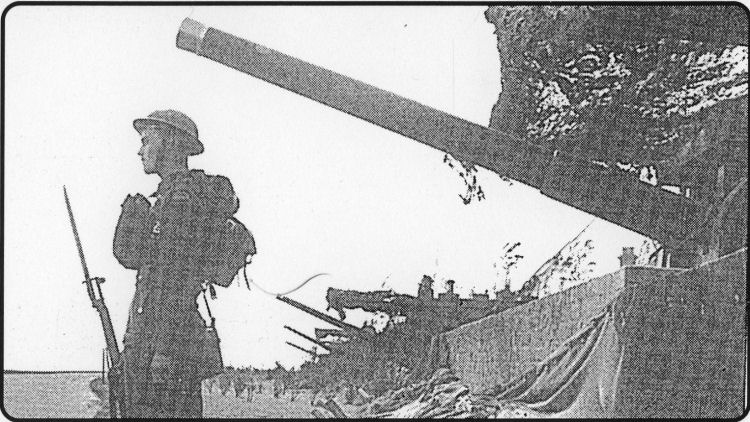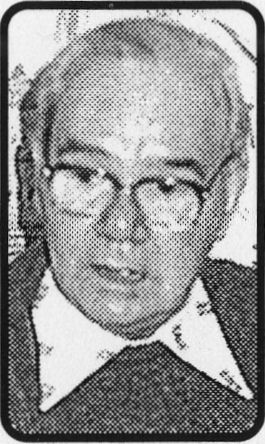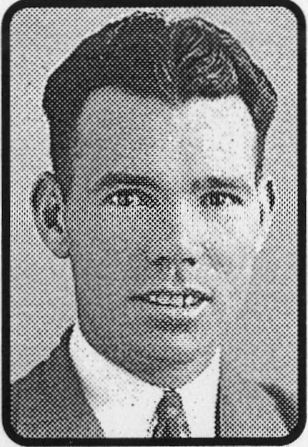Page Updated:- Sunday, 07 March, 2021. |
|||||||||||||
 From the Folkestone Herald Published 23 March 2000 Close shave. A FOLKESTONE man living In Hull, Alec McGarry, 84 has a fund of memories of his home town and tells me he is glad to get copies of the paper from one of his brothers still living in Cheriton. Alec has four step-brothers, Joe, Hugh, Mick and Bernard living In the Cheriton area and says, “We were all born and bred in Folkestone and I must have about a hundred relations still living In the district. All went to the Horn Street school.
“This fine and lovely place still holds a lot of lovely memories for me. I remember when It was all open fields from Whitby Road and Church Road t farmland as far as you could see,” he writes. Alec was particularly Interested in the edition of January 20 when the Herald told of local fears of invasion by Hitler’s forces and, In Memories we featured the success story of former local electrical contractor Doug Denham as well as a photograph of the staff of Otto Marx, the building contractor. That copy of the Herald unleashed a whole host of memories for Alec. “How well I remember the day the picture was taken,” he says. “I was born at 7 Whitby Road and had a sister, four step brothers and a step sister. Sadly both sisters have passed on, as has my mother, who was Mrs Maud Agnes McGarry (nee Crawford,) and my stepfather. “I had just started work for Otto Marx, that was In 1938. The outing picture was taken at Newington; across the road from the Star Inn public house. That is now replaced by the Channel Tunnel station complex.” “What a great day we had, all the chaps in this picture. They were some of the finest bunch of tradesmen it was my pleasure to have worked with. “There was Bill Houghton, brothers Jim and Bunny Houghton, Ernie Chandler, Harry Hadfleld, Bill Shrubsall, Jack, Alf and Snowy Laws, George Fisher, George Webb, Ron Shrewsbury, Yorkle Brown, Dan McCarthy, Ron Ashbrldge, Otto Marx, Len Marx, Steve Chitty, Aubry Newman, Doug and Les Freemantle, and Johnny Andow who came with me to Coventry. “I worked with all these men. “The back row were all the men that worked in Otto’s brickyard, so I don't know their names.
Hated Nazis. There was not many in the building trade that had not worked for Otto, as we all called him.” He came from Austria, but he hated Nazis Germany. “At this time I am writing of, Otto had two big contracts going - at the Garrison Church and the barracks at Moore Barracks that was being extended, and this is where I started work for him. “The garrison church was a master bit of building. People came from all over to see wooden moulds that were made for the reinforced concrete that all the main arches were cast in. “I think at the time this kind of work had not been tried before. To see the fine work done by the carpenters was something to be admired - as I said, the men that I have mentioned were some of the finest around. “The Herald article about the invasion threat (by Terry Sutton, of Dover), brought home to me how close we came to being invaded. How desperate we were after Dunkirk. “We were working at Moore Barracks for Otto when Ron Ashbridge and Steve Chitty came to us before we started work and said we had to report to Aubry Newman at East Cliff, Folkestone, so we had to pack up our tools. “There was me, George Evans, Archie Jackson, Tom Lowe, all bricklayers. When we got there they were just putting two six inch guns Into place and It was our job to build 4ft walls round these guns and put a concrete roof over the top. “We were told we had to work from sunrise to sunset. No let up, seven days a week. We knew then things were serious. “It took us just two weeks to complete this site and then we were sent up on to the Leas where they had just put four six inch guns Into place. “We worked round the clock to get these finished and ‘Bones' Ralph, the foreman bricklayer picked four of the youngest to go down to Dungeness. “How lucky I was to get shifted the very next day from the Leas gun site. “Jerry had a direct hit on the pillbox where we used to run for shelter and the four chaps I had been working with were killed. “If I had not been shifted that day I should not be writing this now. This is still fresh in my mind. “At the time they were putting in four more guns at Dungeness. “German planes were coming in at that point and flying down the coast and machine gunning everything in sight. But they said being the youngest we could run for cover. It was a case of diving for bit of cover in the shingle! “Each day we used to look across the Channel and wonder if invasion was coming. But each day made us stronger and we started to believe we could handle things better. “Then Jerry started bombing the airfields. We were working on a site at Dymchurch and we saw the bombing of Hawklnge and Lympne. It looked to us as if they were bombing Folkestone. “We thought, by what we saw, there could not be much of Folkestone left. So Imagine how glad we were to see the old town O.K. when we returned. “On the Saturday we had just completed a job. Ted Andrews was In charge, a good pal of mine. “We heard this droning and droning sound but could not see anything. Then Ted said ‘Look at that lot' and, right from Folkestone to Dungeness Point all these German planes stretched right across. “We thought any moment we would see parachutes coming down and all thought this is the invasion! “And then the fun started. Dog fights overhead, German planes being shot down and falling Into the sea, and bombers being turned back, dropping their bombs Into the sea. These memories will never leave us.” Alec says he left Folkestone before the ‘doodlebug’ flying bombs arrived and went to work on war damage repair jobs for George Stone in London and Coventry. It was in Coventry he met his future wife who had been drafted in from Hull for war work in an aircraft factory. They wed in 1943. Joining the Merchant Navy, he was then involved in the liberation of France, Belgium and Holland, went out to the Far East and finally reached Japan at the time of the attacks on Hiroshima and Nagasaki. I hope to feature more of Alec's memories another week.

FORMERLY part of the armament of the famous battleship HMS Hood, before her fire power was upgraded, these four 5.5 inch guns are pictured where they were installed on The Leas, at Folkestone, opposite Clifton Crescent, where Alec McGarry worked. The photo dates from 1941.
|
|||||||||||||
|
If anyone should have any a better picture than any on this page, or think I should add one they have, please email me at the following address:-
|
|||||||||||||
| LAST PAGE |
|
MENU PAGE |
|
NEXT PAGE | |||||||||


